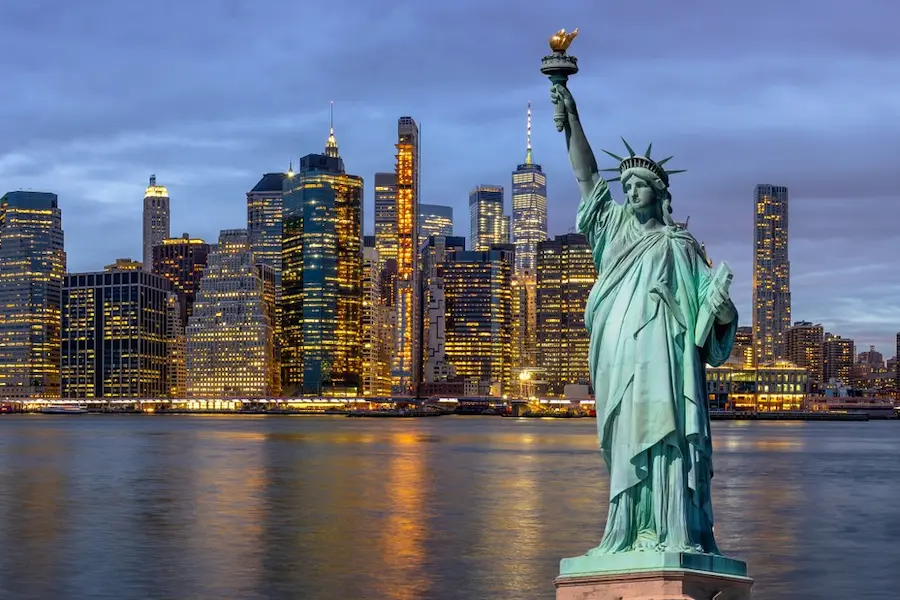Embarking on a journey to the United States can be an exhilarating experience. The vast country, with its diverse landscapes, cultures, and opportunities, promises adventures and memories to last a lifetime. This comprehensive guide is designed to offer practical advice to international visitors, ensuring your American journey is as smooth and enjoyable as possible.
Table of Contents
1. Understanding U.S. Visas and Entry Requirements
2. Planning Your Itinerary: Embracing Diversity
The U.S. is incredibly diverse, not just in its people but also in its landscapes and attractions. Whether you’re drawn to the bustling streets of New York City, the sun-kissed beaches of California, the serene hiking trails in the Rockies, or the historic landmarks in Washington, D.C., there’s something for everyone.
When planning your itinerary, consider the vastness of the country. Traveling between states or coast to coast can be time-consuming. It’s often practical to focus on a specific region or select key locations that you’re most eager to explore. Balance your schedule between urban adventures and natural retreats. Also, be mindful of the weather patterns as they can vary drastically between regions and seasons.

3. Budgeting for Your Trip: Managing Expenses Wisely
Budgeting wisely can make or break your U.S. adventure. The cost of living can vary significantly between different cities and states. Generally, cities like New York and San Francisco are on the pricier end, while smaller towns and rural areas may offer more budget-friendly options.
Accommodation takes up a large portion of the budget, with options ranging from luxury hotels to cozy hostels or vacation rentals. Booking in advance can secure better rates. Dining in the U.S. offers a plethora of choices fitting all budgets, from gourmet restaurants to food trucks and local diners. Remember, tipping is customary in the U.S., and it’s typical to add 15-20% to your bill in restaurants.
Transportation costs can add up, especially if you’re traveling long distances. Renting a car offers flexibility, especially in areas with limited public transport, but don’t forget to factor in fuel costs, parking fees, and potential tolls. In major cities, public transportation networks can be a convenient and cost-effective option.
4. Staying Connected: Communication and Connectivity
Staying connected is key to navigating the U.S. smoothly. Upon arrival, consider purchasing a U.S. SIM card or a mobile plan to ensure easy access to maps, transportation schedules, and essential information on the go. Free Wi-Fi is widely available in public spaces, cafes, and hotels, but it’s wise to use a VPN for secure browsing when on public networks.
Make sure your electronic devices are compatible with U.S. electrical standards (120V, 60Hz). You may need a power adapter or converter for your gadgets. It’s also a good idea to have essential apps downloaded on your phone, such as ride-sharing apps, translation tools, and of course, a reliable travel guide or map app.y
5. Navigating Cultural Nuances: Etiquette and Interaction
Understanding and respecting the cultural nuances can significantly enrich your travel experience in the U.S. Americans are generally known for their openness and friendliness. A greeting, a smile, or a small talk can be common in both urban and rural settings. However, it’s also important to respect personal space and privacy.
When dining, remember that punctuality is appreciated, and it’s customary to wait to be seated unless it’s a self-service establishment. As mentioned earlier, tipping is an integral part of the service industry in the U.S., not just in restaurants but also for services like taxis, salons, and hotel housekeeping.
The U.S. is a melting pot of cultures, which means you’ll encounter diverse traditions and languages. Embracing this diversity and showing respect for different cultures will not only make your journey more pleasant but also more enriching.

6. Health and Safety: Staying Protected on Your Travels
Your health and safety are paramount while traveling. It’s advisable to have comprehensive travel insurance that covers medical expenses, as healthcare in the U.S. can be very costly. Keep a list of emergency numbers, including the nearest embassy or consulate, local emergency services, and your insurance contact.
When it comes to safety, the U.S. is relatively secure for travelers. However, like in any country, it’s wise to stay vigilant, especially in crowded or less familiar areas. Keep your belongings secure, be aware of your surroundings, and trust your instincts. If you’re driving, familiarize yourself with the local traffic laws, as they can vary from state to state.
7. Savoring the Flavors: An Exploration of American Cuisine
American cuisine is as diverse as its people. From the deep-dish pizzas of Chicago to the Tex-Mex flavors of the Southwest, the seafood specialties of New England, and the soul food of the South, each region offers its own culinary delights. Don’t miss out on the local specialties of the areas you’re visiting.
Farmers’ markets and food festivals are excellent places to sample local produce and dishes. Moreover, America’s melting pot culture means you have a chance to taste a variety of international cuisines. Remember, portion sizes in the U.S. can be quite generous, and it’s perfectly acceptable to ask for a to-go box if you can’t finish your meal.
8. The Great American Outdoors: Embracing Nature and Wildlife
The U.S. is home to an impressive array of natural wonders, from the majestic Grand Canyon to the serene Great Smoky Mountains, the rugged beauty of Alaska, and the pristine beaches of Hawaii. The national and state parks offer well-maintained trails, camping sites, and visitor centers. Respect for nature is paramount; remember to follow the ‘Leave No Trace’ principles, ensuring that the beauty of these places remains intact for future visitors.
Wildlife in the U.S. is as varied as its landscapes. While it’s an incredible experience to observe animals in their natural habitat, it’s crucial to maintain a safe distance and not to feed or provoke them. Always follow the guidelines provided by park rangers or local authorities.
9. Retail Therapy: Shopping and Souvenirs
Shopping in the U.S. can be an adventure in itself, from luxury boutiques and large department stores to outlet malls and quirky local shops. Prices and sales tax can vary significantly between states, so it’s worth doing a bit of research if you’re planning a big shopping spree.
When it comes to souvenirs, consider supporting local artisans and businesses. Not only will you take home a unique piece of your travels, but you’ll also contribute to the local economy. Remember, when packing your bags for the journey home, U.S. customs regulations have strict rules about what can and cannot be brought into and out of the country, so be sure to familiarize yourself with these rules to avoid any last-minute surprises.

